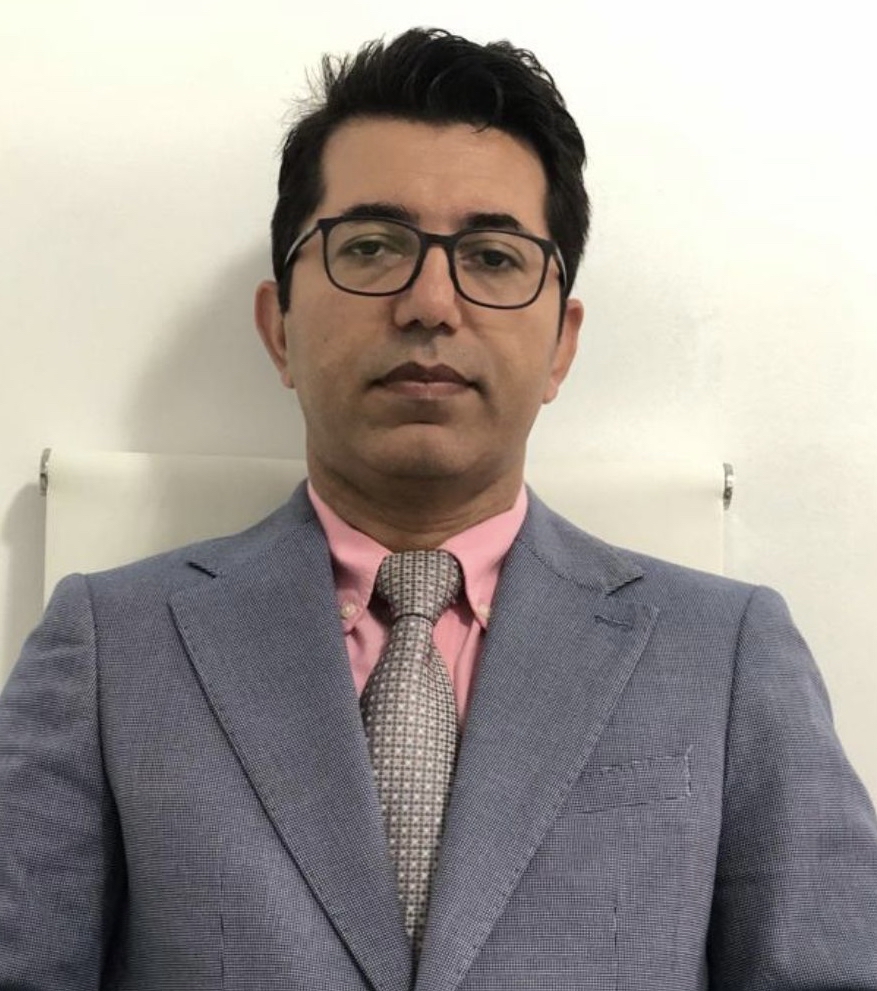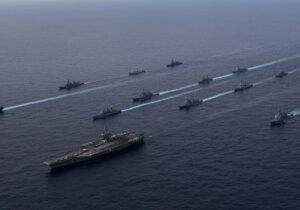Iran has reacted strongly to the Negev Summit, which signaled the institutionalization of the Abraham Accords of August 2020. The theocratic regime decried the efforts of Israel and several Sunni Arab enemies to create a “Middle East NATO.” While still in its infancy, the new alliance could threaten Iran’s long-term transition project from a territorial to a maritime state.
For most of its existence, the Revolutionary Guards’ operations reflected a territorial state strategy, using proxies to gain control over several countries in the Middle East, such as Lebanon. The tiny and antiquated Artesh navy, the Islamic Republic of Iran Navy (IRIN), was barely operational. Supplementing it was the naval unit of the Revolutionary Guards (IRGC), the Neyjroye Darayee Sepah-e Iran (NDSA), created in 1985, which engaged in small-scale operations against oil-tankers of American allies traversing the Straits of Hormuz. In 2005, Ayatollah Ali Khamenei ordered the NDSA’s chief, Rear-Admiral Ali Fadavi, to produce an ambitious 20-year anti-access, area-denial (A2/AD) plan titled Mosalath-e Estrategik-e Darayi, Jange-e Daryai Namonazam (Strategic Triangle Maritime, Irregular Maritime Warfare). In case of threats to Iran’s interests, the plan called for asymmetrical warfare to disrupt traffic in a triangle of maritime chock points stretching from the Straits of Hormuz to Bab al Mandab in the Red Sea and the Malacca Straits in the Indian Ocean.
Crippled by nuclear sanctions, the theocratic regime had to put its vision as a maritime power on hold until the 2015 Joint Comprehensive Plan of Action (JCPOA). With the newly available resources, Tehran implemented a comprehensive naval strategy. One domain involved a blue water fleet serving as an international projection of Iran’s power. In 2019, Rear-Admiral Touraj Hassani, the deputy commander of IRIN, announced that his flotilla would deploy to the Atlantic and even the Gulf of Mexico. On a less symbolic note, IRIN has facilitated extensive oil smuggling operations. Most importantly, the Iranian navy held drills with the navies of Russia and China in the Indian Ocean and the Gulf of Oman.
NEDSA has been in charge of implementing the other domain—the “No Sheriff” doctrine. Beijing developed this doctrine to challenge the so-called “non-innocent” actor, referring to the US Navy in the South China Sea. In the Iranian version, the “non-innocent” actors (i.e., the Americans and their allies) destabilized the Persian Gulf, Straits of Hormuz, and Bab al Mandab, requiring a strong but mainly asymmetrical response that included maritime terrorism. Among the tactics were hit-and-run operations, hijacking naval vessels, hostage-taking, sabotage operations, and destruction of land-based targets. Either directly or through Houthi proxies, NESDA has attacked scores of targets, including the hit on Khurais Abqiq refineries that temporarily knocked out most of the Saudi oil production.
A consummate asymmetrical warfare player, the IRGC has developed many weapons and munitions for its geostrategy. The Guards’ Aerospace Force under Brigadier General Amir Ali Hajizadeh was particularly invested in long-range missiles. The extreme hardline Hajizadeh became known as the “new Qassem Suleimani” and was reputed to be very close to the supreme leader. Known as a virulent enemy of Israel, he named a long-range missile capable of reaching Israel “Khaiber Shekan” (Khaibar buster), a reference to a Jewish citadel conquered by an early Muslim army. Other Aerospace Force missiles had the slogan “Death to Israel” painted on their bodies. Hajizadeh revealed that, based on a discussion with Ayatollah Ali Khamenei in 2018, he boosted the production of drones (unmanned aerial vehicles—UAVs) and subsequently experimented with drone swarms, a promising technology.
For its part, NEDSA boasts an extensive array of weapons and munitions for covert naval operations. The swift boats suitable for swarm attacks—the Nahang class midget submarines, the Al Sabehat swimmer delivery vehicles, and Zulfikar submersible torpedo boats—received wide publicity. In 2020, NEDSA revealed its first extra-large unmanned underwater vehicle (ELUUV), a submarine drone capable of long-range actions. Because of a tendency to exaggerate its technological prowess, experts have doubted whether the regime managed to fabricate such sophisticated ELUUVs, which only a few countries possess. However, even a simpler version would give NEDSA a considerable advantage in the region.
The regime denounced the Abraham Accords, describing its Arab signatories as “traitors.” Hossein Salami, commander of the Revolutionary Guards, warned Israel against operating in the Persian Gulf, the Straits of Hormuz, the Sea of Oman, and the Red Sea. Protesting the Accords went from verbal to kinetic when the Houthis targeted the United Arab Emirates in 2021, killing several people and damaging infrastructure. In January 2022, the Emirates defense systems intercepted a ballistic missile on the day of the Israeli president’s visit to Dubai.
Regardless, the regime was confident about its overall plan—because there was little international censure for the scores of attacks on ships and infrastructure in the Gulf. Eager to conclude the new JCPOA deal, the Biden administration refrained from criticizing Iran while chastising Saudi Arabia. Indeed, despite considerable pressure, the administration refused to re-list the Houthis as a terror group. The Iranians expect the new JCPOA deal to restore its economic fortunes and even see the IRGC dropped from the State Department terror list. Additionally, the regime hopes that the expected American disengagement from the region will complement its maritime strategy.
The Negev Summit puts a question mark on the plan. Israel’s technological experience, including the anti-missile Iron Dome and anti-drone laser technology, can bolster a regional defense system that would neutralize Iran’s advantages.






